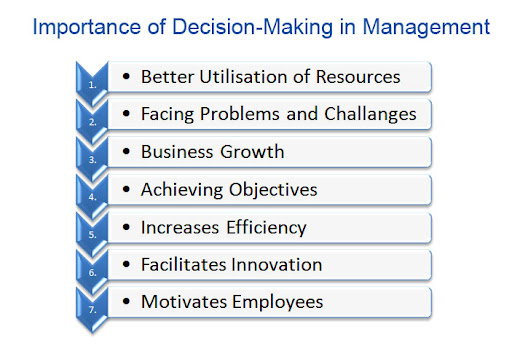
Reliability, although difficult to achieve in a group setting, may be enhanced when the decision group sponsors analysis that uses a deductive tactic, such as a decision tree. When properly managed, groups can be timely, inexpensive, and flexible and can promote acceptance. The group decision process is recommended for information-rich decisions, moderately puzzling decisions, and decisions involving multiple stakeholders with known interest.Wider use of the mixed-mode procedure under these conditions should improve both acceptance and consistency through coalition management. The mixed-mode decision process is best for search decisions that are very puzzling and involve stakeholders with unknown interests.When a decision process fits a decision amenable to its procedures, a favorable effect on cost, timeliness, risk of omission, flexibility, acceptance, consistency, and validity should result. Decision makers with a repertoire of decision processes, skills or staff support to apply them and guidelines to match decisional tactics to decision types and degrees of puzzlement can improve their decision making practices. Most organizations face each of the types of decisions with varying degrees of puzzlement.For example, you might want to gather more detailed or somewhat different information or explore additional alternatives.Decision Making Keywords and Phrases Keywords and PhrasesĪ Collection of Financial Keywords and PhrasesĪ Collection of Economics Keywords and PhrasesĪction learning: Learning focused on outcomes and the future conditions that should have been foreseeable and that produced these outcomes.Īction: Committing resources, usually following a choice.Īctive Listening: Active listening is a way of listening that focuses entirely on what the other person is saying and confirms understanding of both the content of the message and the emotions and feelings underlying the message to ensure that understanding is accurate.Īctor learning: Determining the accuracy of information offered by experts in a decision process, such as the likelihood of a future condition (interest rates), and forming by what has been obtained by the typical experts.Īctual judgment: Based on what the assessor really knows, it is the opposite of hypothetical judgment. If the decision has not met the identified need, you may want to repeat certain steps of the process to make a new decision. In this final step, consider the results of your decision and evaluate whether or not it has resolved the need you identified in Step 1. Step 7: Review your decision & its consequences You’re now ready to take some positive action by beginning to implement the alternative you chose in Step 5. Your choice in Step 5 may very likely be the same or similar to the alternative you placed at the top of your list at the end of Step 4. You may even choose a combination of alternatives. Once you have weighed all the evidence, you are ready to select the alternative that seems to be best one for you. Finally, place the alternatives in a priority order, based upon your own value system. As you go through this difficult internal process, you’ll begin to favor certain alternatives: those that seem to have a higher potential for reaching your goal. Evaluate whether the need identified in Step 1 would be met or resolved through the use of each alternative.

Step 4: Weigh the evidenceĭraw on your information and emotions to imagine what it would be like if you carried out each of the alternatives to the end. In this step, you will list all possible and desirable alternatives. You can also use your imagination and additional information to construct new alternatives. Step 3: Identify the alternativesĪs you collect information, you will probably identify several possible paths of action, or alternatives. Other information is external: you’ll find it online, in books, from other people, and from other sources. This step involves both internal and external “work.” Some information is internal: you’ll seek it through a process of self-assessment.

3 TYPES OF DECISION MAKING HOW TO
Step 2: Gather relevant informationĬollect some pertinent information before you make your decision: what information is needed, the best sources of information, and how to get it. Try to clearly define the nature of the decision you must make. You realize that you need to make a decision.
3 TYPES OF DECISION MAKING PDF
This approach increases the chances that you will choose the most satisfying alternative possible.ĭownload the PDF Step 1: Identify the decision Using a step-by-step decision-making process can help you make more deliberate, thoughtful decisions by organizing relevant information and defining alternatives. Decision making is the process of making choices by identifying a decision, gathering information, and assessing alternative resolutions.


 0 kommentar(er)
0 kommentar(er)
